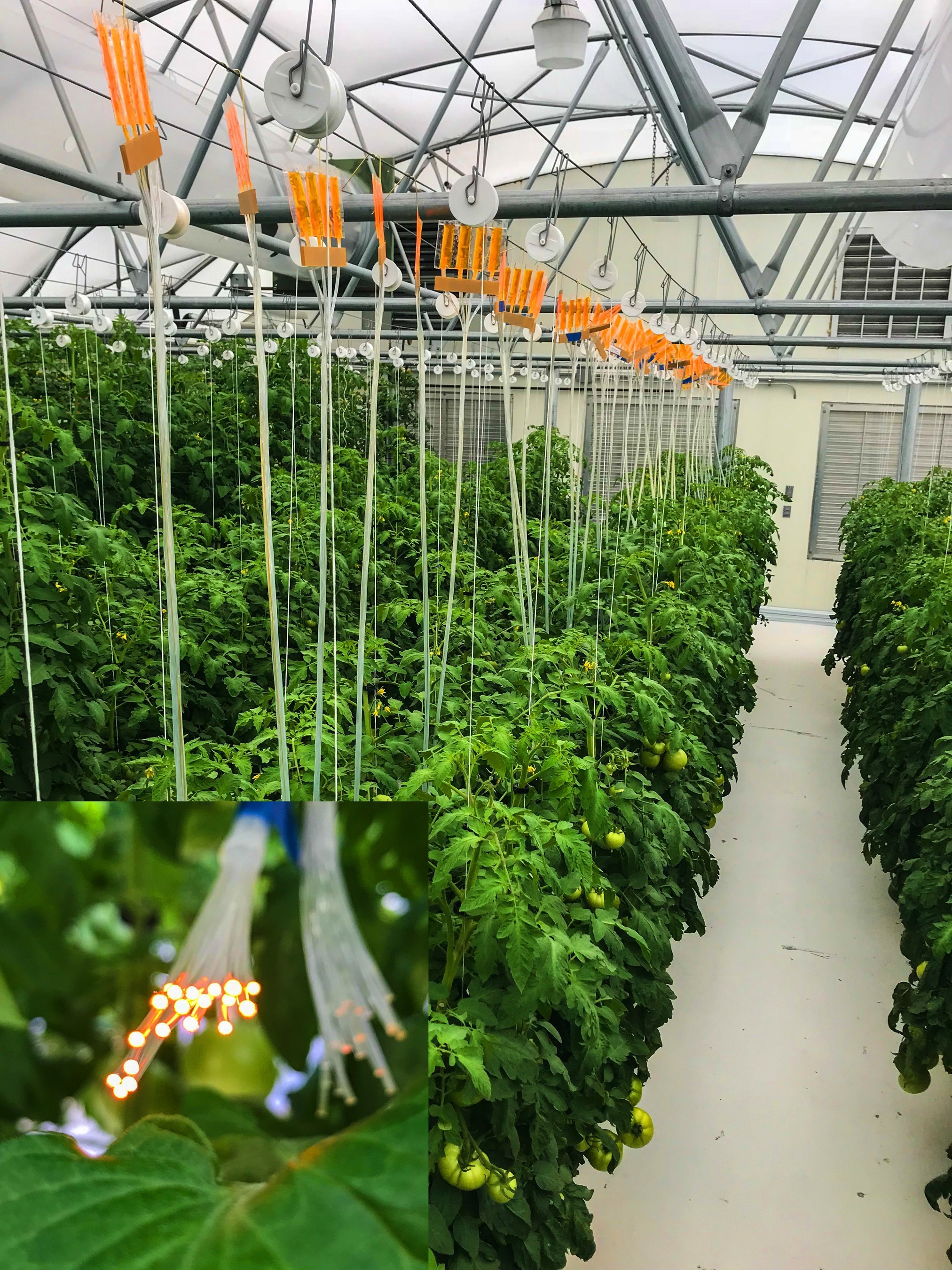Nanotechnology development company UbiQD announced an optical fiber-coupled luminescent concentrator technology as a new tool for optimizing light in controlled environments, enabling light-guiding to future UbiGro™ spectrum-control greenhouse products.
"We continue to push the envelope with light optimization in greenhouses," said Dr. Hunter McDaniel, CEO of UbiQD. "One exciting potential use case is in vertical farming, where you could use our quantum dot-based luminescent fibers to harvest sunlight and optimally transmit that energy to multiple layers of plants, reducing or perhaps eliminating the need for expensive artificial lighting. It might also be useful in a lunar greenhouse." In 2018 the company was awarded a contract by NASA to develop films for tailoring the spectrum of sunlight on long-duration space missions.

(Image: UbiQD)
Hung above plants in a greenhouse, the fiber concentrator devices absorb underutilized portions of sunlight, convert the energy into a more ideal spectrum, and then strategically guide that light to the lower leaves of plants that typically receive less natural light due to shading. In one plant trial this methodology boosted the tomato yield in a commercial hydroponic greenhouse by 7% (fresh weight).
By utilizing UbiQD's range of quantum dot colors, covering visible-to-NIR spectral regions, the company also demonstrated a low-cost, miniature broadband medical light source. Integrated into a spectral tissue sensing system, this could enable a real-time cancer test. Additionally, the device can operate as a free space (unfocused) detector in telecommunications or remote sensing, such as LIDAR, for discerning low-power signals.












